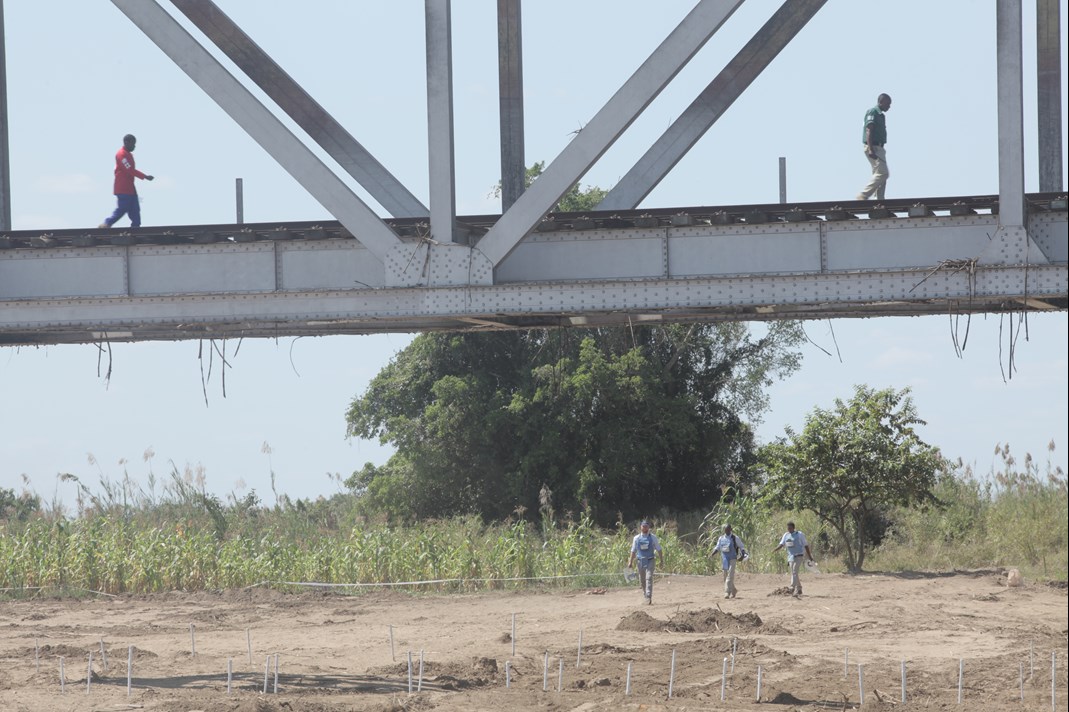Click to download this impact story as a PDF
Background
Mozambique’s railway lines have always had great significance in enabling the movement of materials and by providing access to its ports, which are a hub for the wider region to international markets. Many of the country’s railway lines were mined by the government to protect them from sabotage during the Civil War in the 1980s. The HALO Trust has played a key role in clearing some of these lines of mines. This has made the land safe again and protects staff of the national rail network and users of the lines, while enabling reconstruction and development.
Joao Paulo Fortes da Costa, the Track Manager of CFM, the Port and Railway Authority said:
The demining done by HALO will provide an improvement in the dynamics of maintaining the line…the process will enable, benefit and open up this area to allow better railway works without the fear of mines. This is a big gain for the country; collaboration with HALO has contributed a lot to the development of the country and the region in particular.
The final pieces of infrastructure that HALO cleared – two bridges and three viaducts which carry a railway line in Dondo district – were also some of the most challenging. The railway line provides a crucial link to both domestic and international markets, providing one of the few access points to the sea for several land-locked African countries. Trains carrying granite from Zimbabwe to Beira port, exporting wheat, rice, and fuel to Zimbabwe, and distributing fertilizer to farmers in Mozambique, transit the viaducts and bridges several times a day. The line is a vital component of the Beira Agricultural Growth Corridor (BAGC) initiative which seeks to generate US$1bn in annual revenues for Mozambique by increasing agricultural capacity. Annually, CFM carries 264,700 tons of national cargo and 26,494 tons of international cargo to countries as far away as Zambia and the Democratic Republic of Congo. In future, CFM also hopes to provide passenger services along the line between Beira and the inland city of Manica, further enhancing the developing public transport infrastructure of the country.
The case for mine clearance
Despite the importance and value of this infrastructure, CFM found it difficult to maintain this section of the track due to the presence of mines. A CFM employee lost a leg to a mine accident in the late 1990s. The mines also made it difficult to recover items that fell from the trains or to recover de-railed trucks.
The railway tracks cross the Tongaat Hulett sugar plantation which employs between 7,000 and 10,000 staff. The plantation is an important commercial enterprise integrated within the BAGC plan. It represents a US$50 million investment that produces around 71,000 tonnes of sugar each year. This sugar is then sold to the national market and exported to the European Union. Around 80% of Tongaat Hulett’s employees live either on the company’s land or in the nearby town. Some employees and local people regularly crossed beside or under the bridges and viaducts to travel between work and home. This was an obvious concern to the company.

Technical challenges
Clearing these minefields was technically challenging. The marshy area which was the railway bridges and viaducts’ raison d'être needed to be drained with pumping equipment and then dammed in order to prevent water from seeping back in. This allowed deminers and armoured machines to access the soil for safe excavation. At some points, due to historical flooding, mines were found at depths of up to 90cm. As this is deeper than the search depth of a metal detector, HALO relied upon full excavation, largely with armoured machines. Although deeply buried, a flood or water action could have brought the mines to the surface again, posing a threat to those transiting the area.
Results and impact
By the time HALO completed the task in August 2015, 36,583m² had been cleared and over 330 mines had been located and safely destroyed. This safeguarded a vital piece of Mozambican infrastructure and enabled over 600 beneficiaries to move freely without risk to life or limb.




 Visit our HALO USA website
Visit our HALO USA website
